Calcium deficiency is a common problem in soil and plants. Calcium is essential for plant growth and health, but too little can cause problems such as weak stems, poor root growth, and chlorosis (greening leaves). Calcium is a key component of cell walls and helps plants absorb water and nutrients.
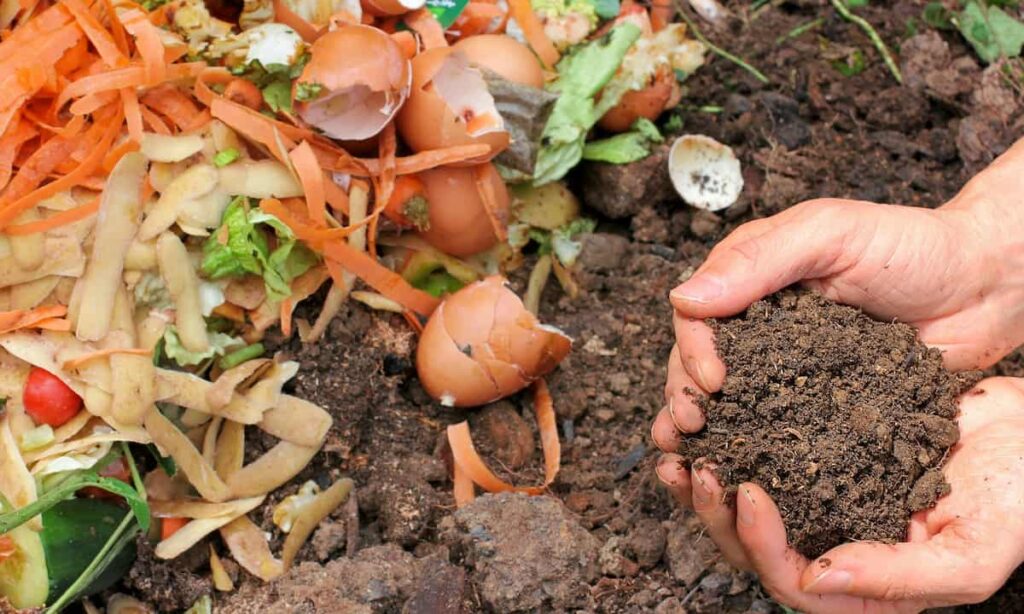
How to fix Calcium deficiency in soil and plants
Role of Calcium in plants and soil
- Calcium also has essential functions in soil. Calcium helps to bind minerals and other nutrients together and to form nodules that trap air and water, which helps improve soil fertility. Additionally, Calcium helps plants resist fungal diseases and increases resistance to abiotic stresses such as drought or cold weather.
- Without enough Calcium, plants may not form proper vascular tissue, leading to weak plants and decreased yields. Calcium is also necessary for the photosynthesis process, which helps plants produce energy.
- The amount of Calcium a plant needs will vary depending on the plant type and the growth stage. However, most plants need about 250 to 1000 mg per day. To ensure that your plants get the proper amount of Calcium, you can add it to the soil or water directly.
- Calcium can be supplied to plants in various ways. Some crops, such as beans and peas, can extract their required amount of Calcium from the soil. Other plants, such as citrus trees, require a supplemental supply of Calcium through food or fertilizer. Regardless of how the Calcium is supplied to plants, it is essential to ensure that this nutrient’s concentration is adequate for optimal plant growth.
What is Calcium Deficiency in soil and plants?
Calcium is one of the essential nutrients for plant growth. It helps plants absorb water, form cell walls, and make chloroplasts. In short, Calcium is necessary for all sorts of crucial processes in plants. Unfortunately, too much Calcium can have negative consequences for plants and soil. Calcium deficiency in the soil can cause stunted growth, yellowing foliage, damaged roots, and even death.
Symptoms of a Calcium deficiency in plants
The symptoms of calcium deficiency in soil can be subtle and difficult to identify. However, they can include decreased crop yield, stunted growth, and yellowing leaves.
- Signs of calcium deficiency in plants include wilting, stunted growth, and pale and yellow leaves.
- Calcium is important for plant growth and healthy leaf development. It is essential for flowers, fruit trees, and vegetables because it helps form the cell walls of these plants’ tissues.
- There are several different ways that Calcium can be lost from a soil or plant: through leaching, decomposition, absorption by roots, and precipitation.
- To diagnose calcium deficiency in plants, soil or plant samples can be examined for signs of poor health, such as white spots on the leaves or stems; low nitrogen levels; high phosphorus levels, or weak root systems.
In case you missed it: How to Fix Copper Deficiency in Plants and Soil: Causes, Symptoms, Adding Naturally, and Chemically
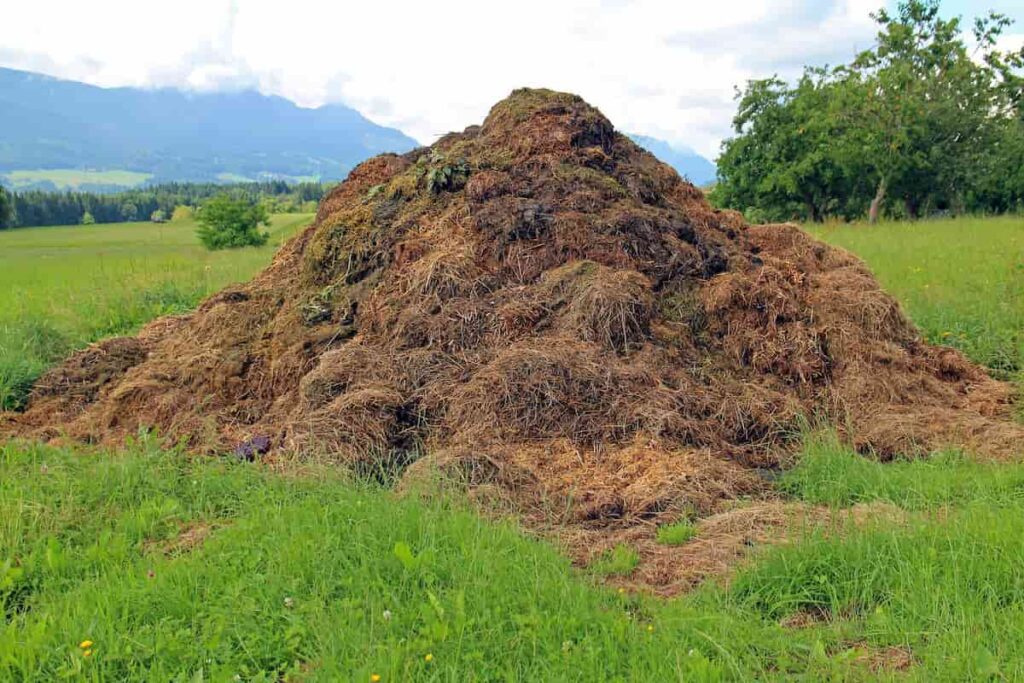
The frequently seen deficiency symptoms include;
- Dead or weak plants
- Blooms that fail to develop or propagate new flowers
- Brown patches on leaves, stems, or fruit
- Poor growth and development of roots and buds
- Low levels of chlorophyll in foliage
- Stunted growth or poor coloration of plants
- Weak flowers and fruit
- Pale leaves and stems
- Soft, spongy soil
- Leaves with a yellow tinge
- Low yields from crops or flowers
What is a natural source of Calcium for plants?
Plants need Calcium to make their cells function properly. Calcium can be found in plants in the form of calcium carbonate in the center of hard seeds and the cell walls of leaves. Calcium can also be obtained from other natural sources like limestone or dolomite.
When a plant doesn’t have enough Calcium, it will show symptoms like stunted growth, leaf yellowing, and brown spots on stems and leaves. To add more Calcium to soil or plants, you can either add limestone or dolomite yourself or spray it onto the plants. You can also get Calcium through chemical means like ammonium sulfate.
Causes of Calcium deficiency in plants
- Poor drainage can lead to calcium deficiency. Overly wet soils will not allow the plant’s roots to extract much of the mineral from the soil, which can result in poor growth and a lack of vigor.
- Calcium is lost when plants are stressed, such as by fertilizer runoff or waterlogging.
- Phosphorus deficiencies also lead to calcium deficiency in plants because phosphorus is required for the plant’s root system to work effectively.
- Acidic soils can make it difficult for plants to extract phosphorus and other nutrients from the soil, resulting in a calcium deficiency. pH levels should be maintained between 6 and 7 for best results regarding plant mineral uptake.
- Soil compaction also inhibits root growth, which can lead to a lack of Calcium in the soil ecosystem. Compacted soils form tight pockets that block airflow and reduce contact between roots and soil particles, leading to decreased available nutrients for plants. Adding organic matter (such as compost) helps improve plant nutrient availability.
- Low soil or water availability is often the most common cause of plant calcium deficiency. When soil or water resources are restricted, it’s difficult for plants to get the nutrients they need to grow.
- Poor planting and growing techniques can also result in a lack of available soil or water. For example, planting too close together can deprive plants of necessary sunlight and air circulation, leading to root problems and a build-up of salts on the soil’s surface. Additionally, poorly dug holes can leave residual moisture trapped beneath the surface, leading to root rot and stunted growth.
- Plantsts struggle to absorb adequate amounts of ocalcium when soil is low in nutrientsum. This can happen when there is excessive clay content in the soil or when no essential minerals are present (such as magnesium).
In case you missed it: How to Fix Boron Deficiency in Soil and Plants: Symptoms, Causes, Adding Naturally, and Chemically
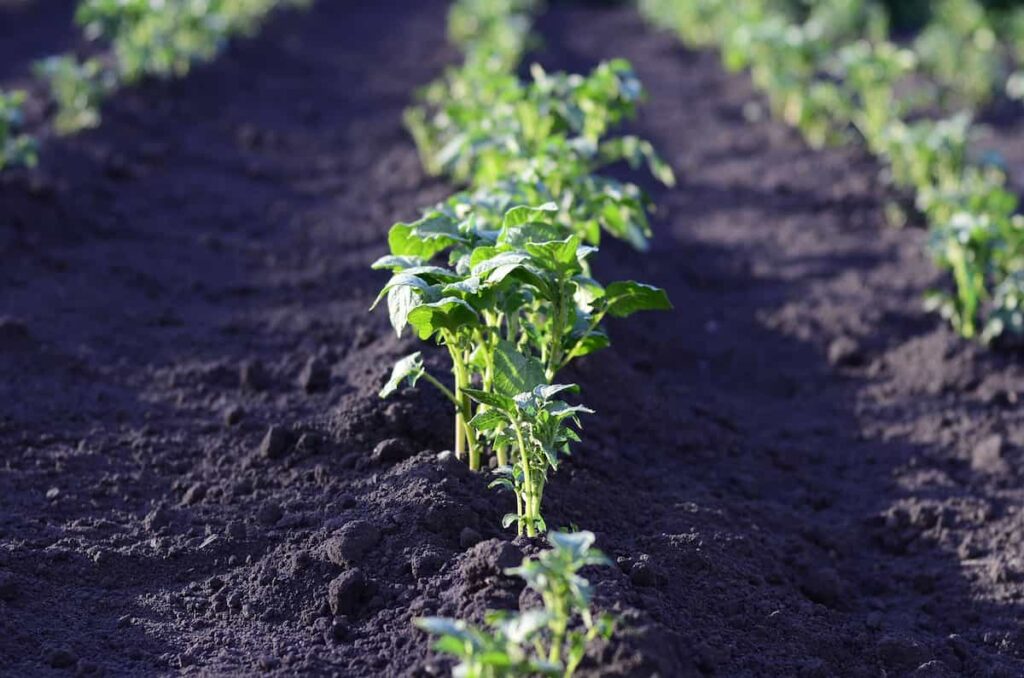
Calcium sulfate and other chemicals to correct calcium deficiency in plants and soil
There are many ways to correct calcium deficiency in soil and plants, depending on the cause. For example, chemical fertilizers containing Calcium are often used to correct deficiencies caused by over-fertilization or other environmental factors. However, these fertilizers can also negatively affect the environment and our health, so it is essential to choose carefully. One of the most common methods for correcting calcium deficiency is calcium sulfate.
Calcium sulfate is a white powder that can be mixed with water or other liquids to create a solution. It can also be applied in a dust or pelletized form. When used in soil, calcium sulfate helps to bind together other minerals and nutrients, which makes them available to plants.
Other chemicals that can correct calcium deficiencies in plants and soil include aluminum sulfate, magnesium sulfate, potassium chloride, iron chloride, boron nitride, copper sulfate, manganese dioxide, zinc oxide, and molybdenum trioxide. When using these products, it is essential to read the labels carefully and consult a professional.
How to fix Calcium deficiency in plants?
If your plants display calcium deficiency symptoms, it’s essential to start by determining the cause. There are a few important things you can do to help fix the problem:
- First, add lime or magnesium sulfate to the soil.
- Then, use a fertilizer that is high in Calcium.
- Check the pH of the soil. If it’s too acidic, add sulfuric acid. If it’s too alkaline, add potassium chloride.
- Plant hardy varieties of plants are known to be good sources of Calcium.
- Water deeply and frequently, keeping the soil moist but not wet.
Easy organic sources of Calcium for plants
There are many ways to get your plants the Calcium they need, and many of these options are organic. Here are easy organic sources of Calcium for plants:
Calcium chloride
You can add calcium chloride to your garden as a soil amendment or foliar spray. This product is often used to treat calcium deficiencies in plants.
Calcium sulfate
You can add calcium sulfate to your garden as a soil amendment or foliar spray. This product is often used to treat zinc deficiencies in plants.
Milk product
You can feed your plants milk products to supplement their diet with essential nutrients, including Calcium.
In case you missed it: How to Fix Phosphorus Deficiency in Soil and Plants: Symptoms, Causes, Adding Naturally, and Chemically
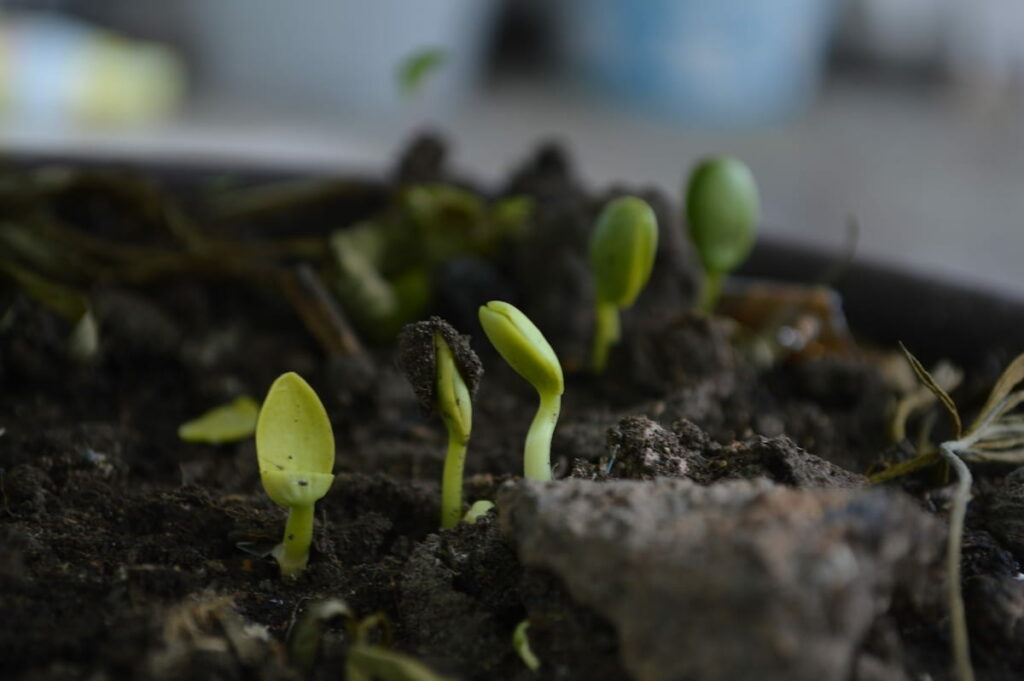
Oyster shells
These are a great source of Calcium for plants because they contain high levels of the mineral calcite. Add them to your compost pile or garden as an amendment, and watch as your plants take on that extra boost of hardness and strength.
Hardwood ashes
Ashes from hardwood trees are another great source of mineral-rich fertilizer for use in gardens and landscapes. They contain mainly potassium, magnesium, and other minerals beneficial to plant growth, such as Calcium and phosphorus.
How to treat Calcium deficiency in plants?
Using a soil test kit
This can identify if there is a calcium deficiency in the soil and provide recommendations on how to fix it.
Looking at the plant
If you notice that the plant is struggling or has died due to a calcium deficiency, you can check the leaves for chlorosis symptoms.
Adding elemental Calcium
This will help furnish the plant with the necessary amount of Calcium. You can also add gypsum (calcium sulfate), which helps bind together soils and provides an acidic environment that helps break down minerals.
Ways to solve calcium deficiency
There are many ways to solve calcium deficiency in the soil, but the most common way is to add lime.
Add lime
Lime is a natural way to increase the available Calcium in soil. It works by correcting the pH balance, which allows more Calcium to be absorbed by plants.
Lime absorbs excess water, helping to keep the soil dry and preventing root rot. It can also help to increase the pH of the soil, which can help improve plant growth and resist pests. If you are adding lime based on your soil test results, use enough, so the mixture reaches a pH of 6.5-7.5. You can also add magnesium or potassium sulfate to your soil if you have calcium uptake or plant growth issues.
In case you missed it:How to Fix Potassium Deficiency in Soil and Plants: Causes, Symptoms, Adding Naturally, and Chemically
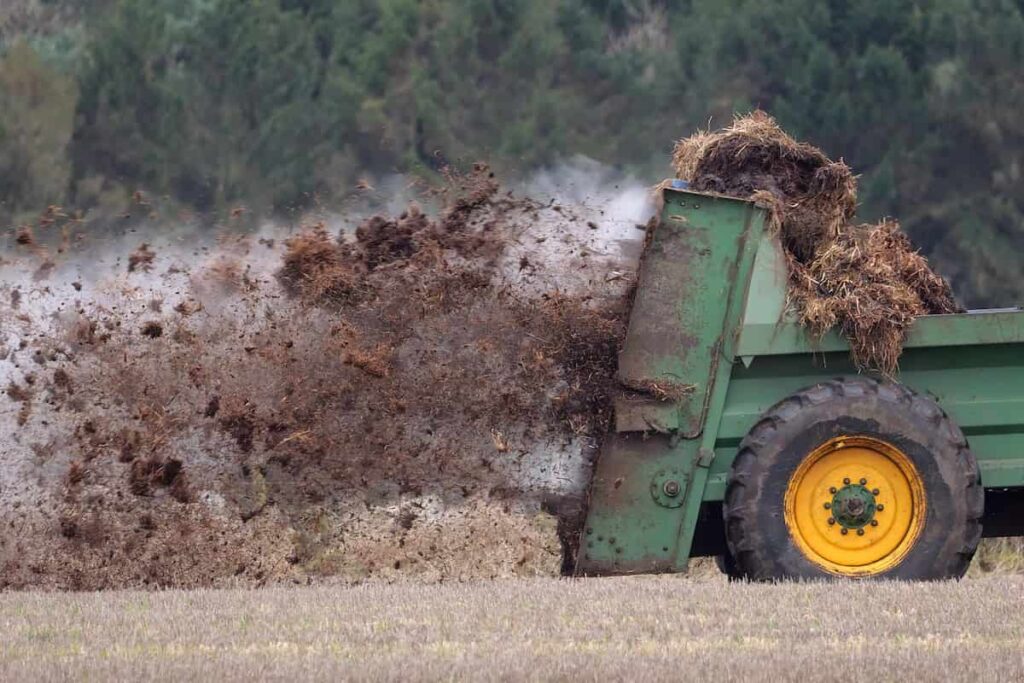
Use bone meal
Bone meal is another popular way to fix calcium deficiency in the soil. It works by adding minerals to the soil that help with plant growth.
Use organic matter
Adding organic matter can also help improve calcium availability in soil. This is because organic materials release nutrients supporting plant growth and development over time.
Fertilize with manure
Manure is another great way to add nutrients and minerals to the soil, which can help improve calcium availability for plants.
Add seaweed extract
Seaweed extract effectively addresses calcium deficiency in the soil. It helps bind essential minerals such as Calcium, making them more available for plants to uptake。
Use a mineral supplement
If all else fails and you want to supplement your plants’ diet with extra Calcium, you can use a mineral supplement instead。
How does Calcium deficiency affect plant quality?
A calcium deficiency in plants affects the quality of new leaves. It will slow down the plant’s rate of growth. The signs the quality of the plant has been affected include the following:
- Little brown spots
- Crinkling
- Leaves begin to die
- Distorted or undersized new leaves
- Dead spots
- Green areas next to the brown spots
- Mottling or spotting
- Stunted plant growth
- Curled tips
Tips to prevent Calcium deficiency in plants
Preventing calcium deficiency in plants is essential to ensure healthy growth and productivity. There are a few ways to prevent calcium deficiency in plants:
- Maintain a well-balanced soil moisture content with plenty of organic matter.
- Plant varieties that are known for their high calcium content. Choose cultivars that are resistant to calcium deficiencies. Some especially resistant cultivars include ‘Golden Acre’ sweet corn, ‘Georgia Wonder’ tomatoes, and ‘Green Giant’ spinach.
- Use Epsom salt as a natural drench to increase the available ionic Calcium in the soil.
- Apply ammonium sulfate or nitrate to the soil as a fertilizer source to help boost calcium uptake.
- Apply bone meal or fish emulsion as supplements to help increase the availability of minerals in the plant’s soil.
- Monitor soil pH levels regularly and adjust as necessary if levels become too high or low. A slightly alkaline pH level is ideal for plant growth, while a more acidic pH level can inhibit root growth and result in calcium deficiency symptoms in plants.
- Prune away diseased or damaged branches near the soil surface to improve access for roots. Dead branches will not provide sufficient water and nutrients to the plant, resulting in a calcium deficiency condition.
Fix Calcium deficiency in soil and plants chemically
Add lime or dolomite
These minerals are naturally high in Calcium and can help address some causes of calcium deficiency in soil and plants. Dolomite is especially effective at correcting deficiencies caused by magnesium and potassium shortages.
Use chelated minerals
These have been chemically attached to molecules that help them absorb more easily into plant cells. Chelated minerals are especially effective at addressing deficiencies caused by magnesium or potassium shortages.
In case you missed it: How to Fix Nitrogen Deficiency in Soil and Plants: Symptoms, Causes, Adding Naturally, and Chemically
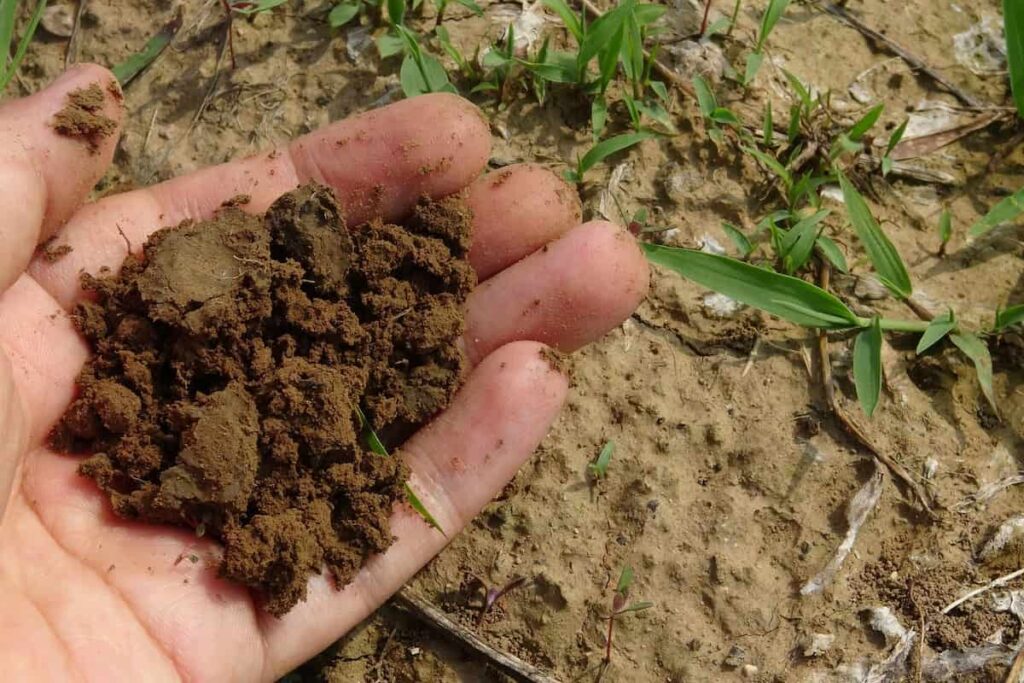
Use Elemental sulfur as a fertilizer
Sulfur is a mineral abundant in soils rich in organic matter and can help improve Ca availability in the soil matrix. It can also be used as a fungicide or herbicide if needed, depending on the specific needs of your garden.
Use a foliar spray with iron sulfate
Iron sulfate will fix an iron deficiency, while zinc sulfate will correct manganese deficiencies.
Fix Calcium deficiency in soil and plants naturally
- Use organic matter to improve soil fertility. Add carbon, nitrogen, and other essential elements to the soil to help with calcium absorption. Add compost, aged manure, or green manure when you plant new crops or after harvesting crops.
- Aerate your soil regularly. This helps air and water circulate through the soil and promote the uptake of nutrients.
- Mulch your plants to conserve moisture and cool the soil in summer.
- Feed your plants with a balanced fertilizer that includes Calcium. Choose an all-natural fertilizer, if possible, as these are least likely to cause problems with calcium availability in the soil or plants. Consistent fertilizing will help increase yields and offset deficiencies caused by inadequate calcium levels in the soil.
- Plant legumes in rotation with other crops to add nitrogen to the soil, which can help increase Calcium absorption by plants. Check with the local extension service for more information on adding nutrients organically into your garden or farmland.
Conclusion
Calcium is a nutrient essential for plant cells’ structure and function. It helps to form strong cell walls and prevents cellular damage from occurring. Additionally, Calcium supports the growth of root tips, flowers, leaves, and other plant structures. The causes of calcium deficiency in soil vary but typically involve a lack of available nutrients or inadequate precipitation levels. Plants require a balanced amount of Calcium to grow and thrive. Calcium is essential for growing stems, leaves, flowers, and fruits.
- Types of Pesticides Used in Agriculture: A Beginner’s Guide
- Economical Aquaculture: A Guide to Low-Budget Fish Farming
- 15 Common Planting Errors That Can Doom Your Fruit Trees
- How to Make Houseplants Bushy: Effective Tips and Ideas
- Innovative Strategies for Boosting Coconut Pollination and Yield
- Pollination Strategies for Maximum Pumpkin Yield
- The Complete Guide to Chicken Fattening: Strategies for Maximum Growth
- Natural Solutions for Tulip Problems: 100% Effective Remedies for Leaf and Bulb-Related Issues
- Revolutionizing Citrus Preservation: Towards a Healthier, Greener Future
- Natural Solutions for Peony Leaf and Flower Problems: 100% Effective Remedies
- Maximizing Profits with Avocado Contract Farming in India: A Comprehensive Guide
- Natural Solutions for Hydrangea Problems: 100% Effective Remedies for Leaf and Flowers
- The Ultimate Guide to Choosing the Perfect Foliage Friend: Bringing Life Indoors
- From Sunlight to Sustainability: 15 Ways to Use Solar Technology in Agriculture
- The Ultimate Guide to Dong Tao Chicken: Exploring from History to Raising
- The Eco-Friendly Makeover: How to Convert Your Unused Swimming Pool into a Fish Pond
- Mastering the Art of Delaware Chicken Farming: Essentials for Healthy Backyard Flocks
- 20 Best Homemade Fertilizers for Money Plant: DIY Recipes and Application Methods
- How to Craft a Comprehensive Free-Range Chicken Farming Business Plan
- Brighten Your Flock: Raising Easter Egger Chickens for Beauty and Bounty
- How to Optimize Your Poultry Egg Farm Business Plan with These Strategies
- Subsidy for Spirulina Cultivation: How Indian Government Schemes Encouraging Spirulina Farmers
- Ultimate Guide to Raising Dominique Chickens: Breeding, Feeding, Egg-Production, and Care
- Mastering the Art of Raising Jersey Giant Chickens: Care, Feeding, and More
- Ultimate Guide to Raising Legbar Chickens: Breeding, Farming Practices, Diet, Egg-Production
- How to Raise Welsummer Chickens: A Comprehensive Guide for Beginners
- How to Protect Indoor Plants in Winter: A Comprehensive Guide
- Ultimate Guide to Grow Bag Gardening: Tips, Tricks, and Planting Ideas for Urban Gardeners
- Guide to Lotus Cultivation: How to Propagate, Plant, Grow, Care, Cost, and Profit
- Agriculture Drone Subsidy Scheme: Government Kisan Subsidy, License, and How to Apply Online
- Ultimate Guide to Raising Araucana Chickens: Breed Profile, Farming Economics, Diet, and Care
- Bringing Hydroponics to Classroom: Importance, Benefits of Learning for School Students
- Ultimate Guide to Raising Polish Chickens: Breed Profile, Farming Economics, Diet, and Care
- Ultimate Guide to Raising Australorp Chickens: Profile, Farming Economics, Egg Production, Diet, and Care
- Silkie Chicken Farming: Raising Practices, Varieties, Egg Production, Diet, and Care
- Sussex Chicken Farming: Raising Practices, Varieties, Egg Production, Diet and Care